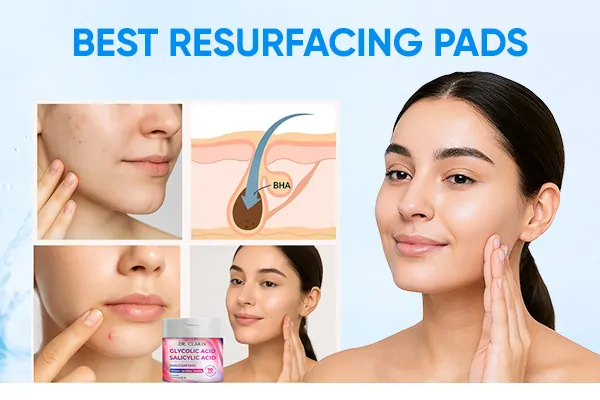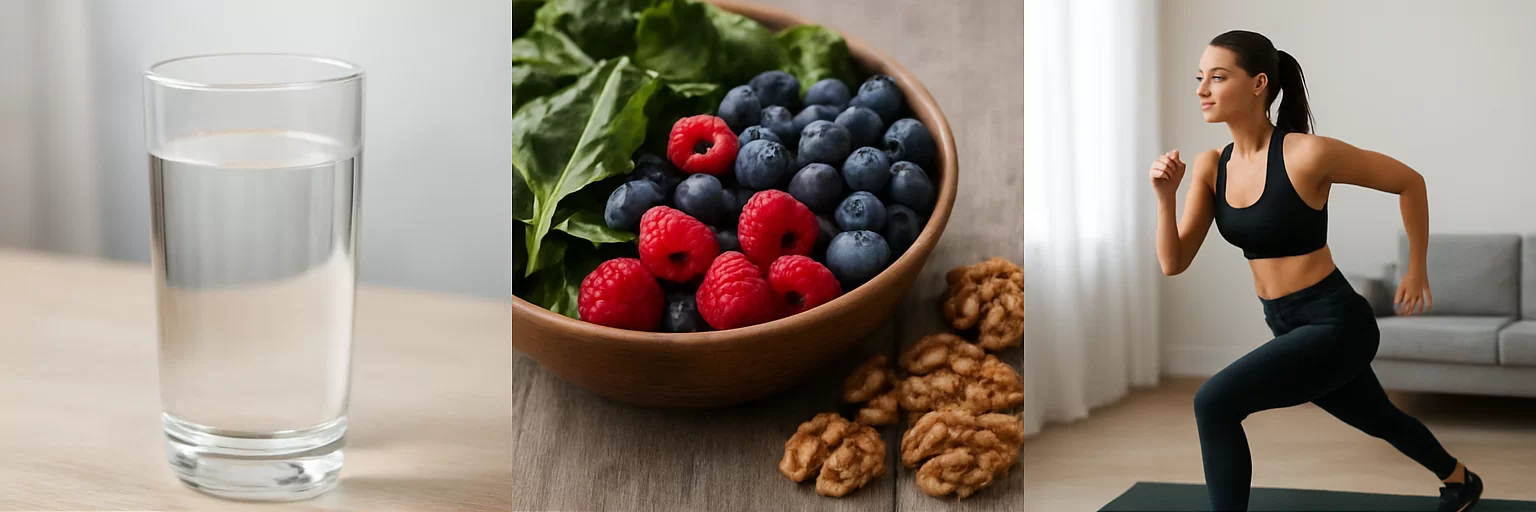BLOG, DUALCLEAR PADS
Best Resurfacing Pads for Powerful Skin Renewal
Exfoliation is the cornerstone of any effective skincare regimen. When dead skin cells accumulate, they lead to a dull, uneven complexion. Enter resurfacing pads, an innovative all-in-one solution designed to exfoliate, refresh, and restore skin’s natural radiance. Unlike traditional scrubs or at-home peels, resurfacing pads for face offer a consistent, controlled approach that minimizes irritation while maximizing renewal. In this comprehensive guide, we’ll delve into the transformative powers of facial resurfacing pads, outline key benefits of complexion renewal pads, discuss the science behind resurfacing toner pads, and highlight cutting-edge options such as Dr.Clariv’s DualClear Pads.
Whether you’re battling uneven texture, pigmentation, or stubborn dryness, integrating resurfacing pads into your routine can dramatically improve skin health. Consistent use helps unclog pores, smooth surface irregularities, and reduce discoloration. Keep reading to discover why resurfacing pad for face are essential, how facial resurfacing pad differ from other exfoliating tools, and how to choose the best complexion renewal pads and resurfacing toner pad for your skin type.
What Are Resurfacing Pads?
Resurfacing pads are pre-soaked, single-use pads infused with chemical exfoliants—commonly alpha-hydroxy acids (AHAs) like glycolic and lactic acid, beta-hydroxy acid (BHA) such as salicylic acid, and supportive ingredients like antioxidants and humectants. These pads simplify multi-step treatments by combining cleansing, exfoliation, and toning into one swipe. Each resurfacing pad provides a controlled concentration of active ingredients, ensuring consistent results without the guesswork that often accompanies mixing at-home peels or scrubs.
The versatility of resurfacing pads makes them suitable for a wide range of skin types. From blemish-prone complexions to mature, sun-damaged skin, these pads can address multiple concerns. Unlike abrasive physical scrubs, resurfacing pads use a gentle, chemical-driven approach to dissolve dead skin cells and clear excess oil, reducing the risk of micro-tears and inflammation. With proper use, you’ll notice a brighter, smoother surface and fewer visible signs of uneven texture or hyperpigmentation.
Benefits of Resurfacing Pads for Face
Using resurfacing pads for face is a time-efficient way to keep skin consistently renewed. Below are key advantages:
1. Uniform Exfoliation: Each resurfacing pad for face delivers a calibrated dose of acids, removing dead cells evenly across the skin. This uniform action minimizes patchy or uneven exfoliation common with manual scrubs.
2. Deep Pore Cleansing: Ingredients like salicylic acid in resurfacing pad for face penetrate into clogged pores, dissolving oil and debris that contribute to blackheads and breakouts.
3. Improved Texture and Tone: Over time, consistent use of resurfacing pads for face helps diminish rough patches, fine lines, and discoloration by promoting cellular turnover and collagen production.
4. Enhanced Product Absorption: Clearing the outermost layer of dead cells allows serums, moisturizers, and treatments to penetrate more effectively, maximizing the benefits of subsequent steps.
5. Controlled Irritation: Because resurfacing pad for face are pre-measured, you avoid the accidental overuse of acids that can occur with DIY solutions. Gentle ingredients like aloe vera, niacinamide, or panthenol often accompany the active exfoliants to soothe and protect.
6. Convenience and Hygiene: Single-use resurfacing pads for face reduce cross-contamination risks. After swiping, simply discard the pad—no messy cleanup required.
For those seeking a reliable approach to brighter, smoother skin, resurfacing pad for face are a must-have tool in any skincare arsenal.
How Facial Resurfacing Pads Work
Facial resurfacing pads leverage a combination of chemical and mild physical exfoliation to lift away dead cells and impurities. While the term “resurfacing” might sound complex, the application process is straightforward:
|
Step 1: Cleanse – Start with a gentle cleanser to remove surface makeup, oil, and dirt. Clean skin ensures that active ingredients can penetrate effectively. Step 2: Swipe – Gently sweep a facial resurfacing pad across the T-zone, cheeks, and chin. Spend extra seconds on congested or uneven areas to allow acids to dissolve dead cells. Step 3: Dry/Wait – Let skin air dry for a minute or two. This pause gives the acids time to work within pores and on the surface. Step 4: Continue Routine – Follow with targeted serums (e.g., vitamin C or peptides) and moisturizer. If using facial resurfacing pads in the morning, finish with SPF 30+. Frequency – Begin with using facial resurfacing pad 2–3 times per week. Once tolerance is established, you can increase to nightly use—especially if you choose a formula with lower acid concentrations. |
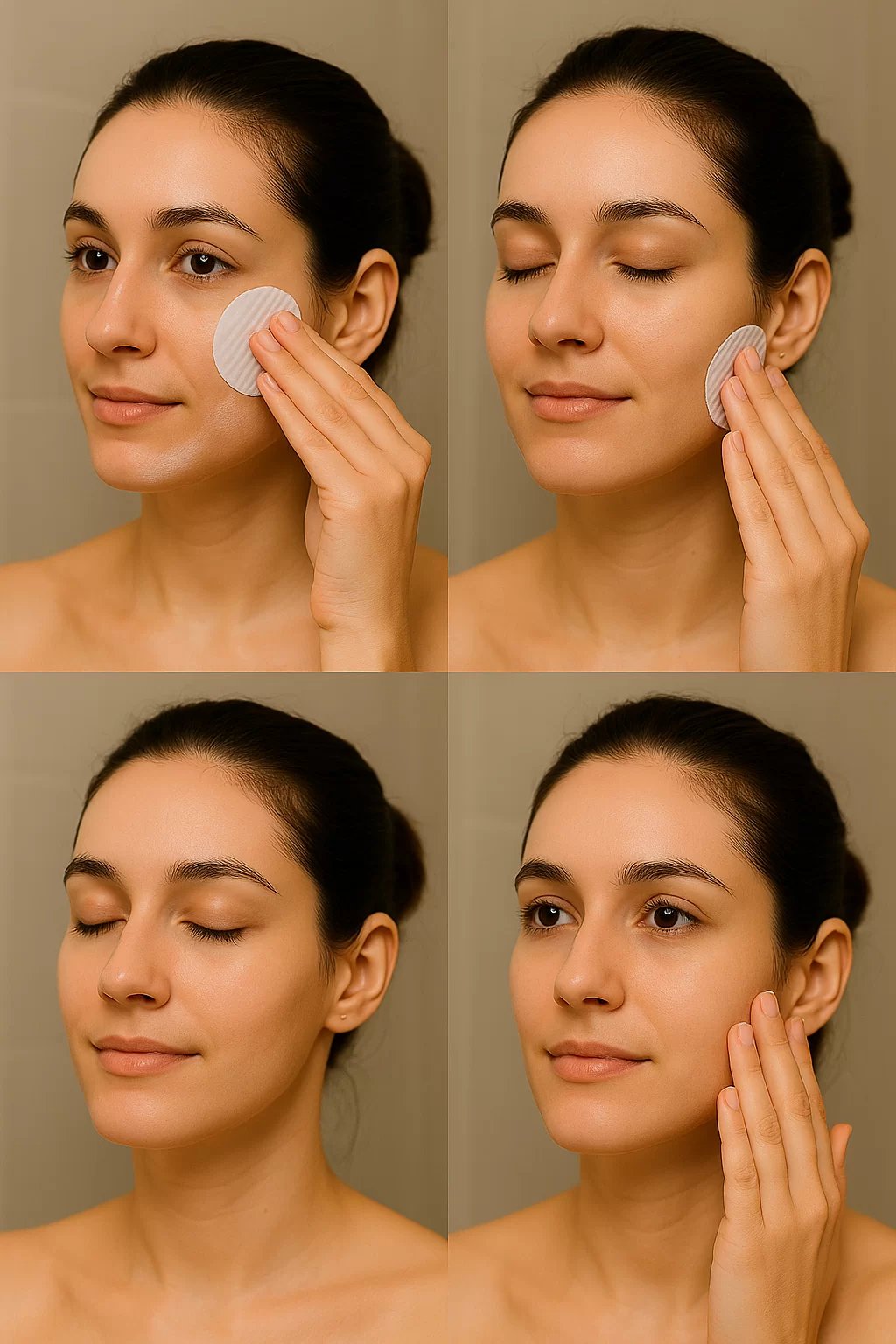 |
A well-formulated facial resurfacing pad balances potent exfoliants (e.g., 2% salicylic acid or 7% glycolic acid) with calming ingredients (e.g., chamomile or centella asiatica). This ensures you remove surface debris efficiently without over-drying or irritating the skin. Dr.Clariv’s DualClear Pads are an example of this approach—they feature salicylic acid alongside niacinamide and botanical extracts, providing a multi-layered treatment that refines texture, clears pores, and soothes inflammation.
Key Ingredients in Complexion Renewal Pads
When shopping for complexion renewal pads, it’s important to examine ingredient lists. These pads combine exfoliants, hydrating agents, and anti-inflammatory components to promote a radiant, even-toned complexion. Below are core ingredients typically found in top-tier complexion renewal pad:
1. Glycolic Acid (AHA)
A small-molecule AHA derived from sugar cane, glycolic acid penetrates the skin’s surface to dissolve bonds between dead cells. It’s a gold standard for smoothing texture and lightening dark spots. Concentrations in complexion renewal pads range from 5% to 10%.
2. Salicylic Acid (BHA)
Derived from willow bark, salicylic acid is lipid-soluble, enabling it to penetrate clogged pores. In complexion renewal pad, a 1%–2% BHA concentration helps clear blackheads and whiteheads while reducing inflammation.
3. Lactic Acid (AHA)
A gentler AHA sourced from milk, lactic acid provides mild exfoliation suitable for sensitive or drier skin. Concentrations of 2%–5% in complexion renewal pad ensure subtle smoothing without irritation.
4. Niacinamide
Also known as vitamin B3, niacinamide regulates sebum production, strengthens the barrier, and reduces redness. When paired with acids in complexion renewal pad, it maintains hydration and minimizes irritation.
5. Panthenol (Pro-Vitamin B5)
A humectant that draws moisture into the skin, panthenol aids in barrier repair and provides hydration—essential after chemical exfoliation.
6. Antioxidant Extracts
Green tea, vitamin C (ascorbic acid or ascorbyl glucoside), and grapeseed extract neutralize free radicals and combat oxidative stress. Including these in complexion renewal pad ensures long-term skin health and helps fade pigmentation.
7. Botanical Soothers
Chamomile, centella asiatica, and aloe vera calm inflammation and promote healing. These ingredients are particularly important in complexion renewal pad to alleviate potential stinging from acids.
By selecting complexion renewal pad with a balanced combination of exfoliants, hydrating agents, and soothing extracts, you achieve effective resurfacing without compromising the skin’s natural barrier. Dr.Clariv’s DualClear Pads exemplify this synergy—offering 2% salicylic acid, 2% niacinamide, and centella asiatica extract to refine pores, soothe irritation, and maintain moisture.
Exfoliating with Resurfacing Toner Pads
Resurfacing toner pads serve as a liquid-based exfoliation tool, combining the benefits of toners and pads into one. Required elements in effective resurfacing toner pad include:
-
AHA/BHA Blend: Many resurfacing toner pad feature a dual-acid approach—glycolic acid for surface renewal and salicylic acid for pore cleansing.
-
Hydrating Humectants: Ingredients like hyaluronic acid, propylene glycol, or glycerin maintain hydration, preventing over-dryness after acid application.
-
Soothing Botanicals: Green tea, chamomile, or panthenol minimize irritation and redness that can accompany acid use.
-
pH-Balanced Formula: An optimal acidity (around 3.5–4.0) ensures acid efficacy while preserving barrier integrity. Many resurfacing toner pad include pH adjusters to maintain this balance.
-
Antioxidants: Vitamin C derivatives or botanical extracts in resurfacing toner pad protect against environmental damage and help fade dark spots.
How to Use Resurfacing Toner Pads
|
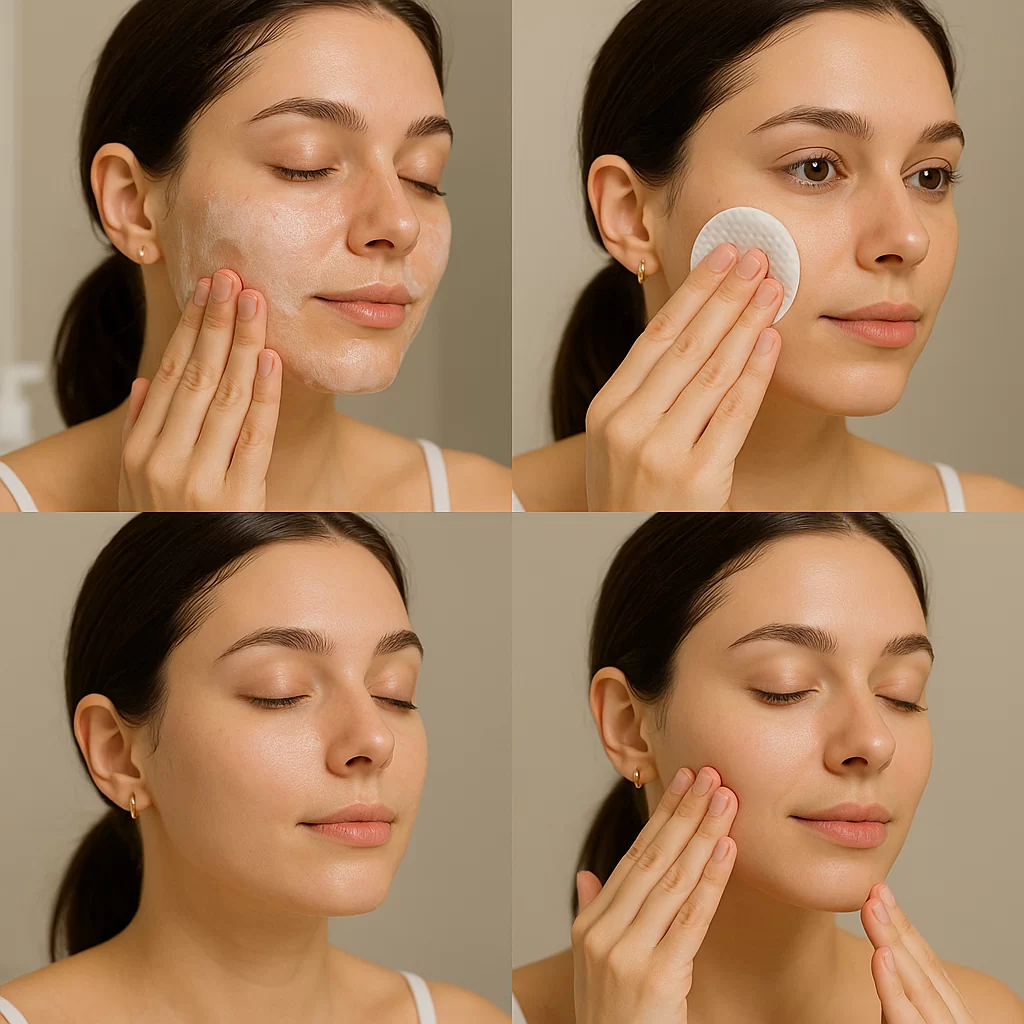 |
Use resurfacing toner pad 2–3 times per week initially. As your skin acclimates, you can transition to nightly use if the formula is gentle and includes adequate soothing agents. The liquid format allows for quick, uniform coverage—making resurfacing toner pads an excellent alternative for those who prefer not to use textured surfaces.
Comparing Facial Resurfacing Pads vs. Traditional Scrubs
While manual scrubs—often containing sugar, salt, or crushed nutshells—offer some degree of physical exfoliation, facial resurfacing pads provide a multi-pronged approach with distinct advantages:
1. Consistent Active Delivery: Each facial resurfacing pad contains a pre-measured amount of acid, ensuring that every application has the same efficacy. In contrast, DIY scrubs may be inconsistent in mixing ratios and require guessing the correct amount.
2. Reduced Risk of Microtears: Traditional scrubs can be overly abrasive, creating microtears that lead to irritation, inflammation, and potential scarring. Facial resurfacing pad rely primarily on chemical exfoliation, minimizing mechanical friction. When textured sides are present, they employ gentle polishing rather than harsh abrasion.
3. Dual-Action Exfoliation: Many facial resurfacing pad combine a lightly textured surface with chemical exfoliants. This hybrid method lifts away dead cells and dissolves intercellular bonds that hold debris in place. Scrubs typically only address surface flakes and do not provide the depth of chemical renewal.
4. Enhanced Hydration and Soothing: Top-tier facial resurfacing pad include humectants (like hyaluronic acid) and botanicals (aloe, centella asiatica) to maintain moisture and calm inflammation. Scrubs often lack these supportive ingredients, leaving skin vulnerable to dryness.
5. Convenience and Hygiene: Facial resurfacing pad are single-use, reducing contamination risks. After using a pad, you simply discard it. Scrubs require rinsing tools and can harbor bacteria if not cleaned properly.
For those seeking comprehensive renewal, facial resurfacing pad outperform traditional scrubs by promoting deeper resurfacing, minimizing irritation, and providing a streamlined, hygienic experience.
How to Choose the Right Complexion Renewal Pads for Your Skin Type
When evaluating complexion renewal pads, consider your unique skin profile. Below is a guide to help you select the ideal formula:
Oily/Acne-Prone Skin:
-
Recommended Ingredients: Salicylic acid (1–2%), niacinamide (2–3%), witch hazel extract.
-
Why: Salicylic acid clears congested pores and controls oil; niacinamide balances sebum and calms inflammation. Witch hazel acts as a natural astringent.
-
Frequency: Start with using complexion renewal pad 3 times per week. Increase to nightly use if tolerated. Always follow with a lightweight, oil-free moisturizer.
Combination Skin:
-
Recommended Ingredients: Balanced AHA/BHA blend (5% glycolic, 1% salicylic), hyaluronic acid, green tea extract.
-
Why: AHAs address surface texture on drier areas; BHAs unclog oily zones. Hyaluronic acid ensures hydration, while green tea soothes.
-
Frequency: Use complexion renewal pad 2–3 times weekly at night. On alternate nights, apply a purely hydrating toner pad to maintain moisture.
Dry/Sensitive Skin:
-
Recommended Ingredients: Lactic acid (2–4%), panthenol, aloe vera extract.
-
Why: Lactic acid offers gentle exfoliation without significant dryness. Panthenol and aloe repair and hydrate the barrier.
-
Frequency: Begin with complexion renewal pads once per week, monitoring for sensitivity. If well tolerated, increase to twice weekly.
Mature/Dull-Looking Skin:
-
Recommended Ingredients: Glycolic acid (7–10%), vitamin C derivative, peptides.
-
Why: Glycolic acid promotes cell turnover to reveal brighter skin. Vitamin C brightens and fights free radicals, while peptides support collagen production.
-
Frequency: Use complexion renewal pad 2–3 times weekly. Incorporate a vitamin C serum on alternate mornings for added brightening.
Pigmented/Uneven Skin:
-
Recommended Ingredients: AHA/BHA combo (5% glycolic, 1% salicylic), kojic acid, licorice root extract.
-
Why: AHAs and BHAs exfoliate pigmented cells; kojic acid and licorice extract help lighten dark spots and restore even tone.
-
Frequency: Apply complexion renewal pad 3 times per week at night. Follow with a targeted brightening serum and SPF during the day.
By matching ingredients in complexion renewal pad to your skin’s needs, you optimize results—ensuring effective exfoliation while maintaining comfort and hydration.
Integrating Resurfacing Pads into a Comprehensive Routine
To maximize the benefits of resurfacing pads, they should be part of a structured skincare regimen. Below is a suggested weekly schedule that incorporates resurfacing pads, resurfacing pads for face, resurfacing toner pad, and complexion renewal pads, along with essential supporting steps.
Daily Morning Routine
-
Cleanse: Use a gentle, pH-balanced cleanser to remove overnight oils.
-
Hydrating Toner/Pads (Alternate): On mornings you’re not using resurfacing toner pad, apply a hydrating pad or mist to prep the skin.
-
Serum: Apply a vitamin C or niacinamide serum for antioxidant protection and barrier support.
-
Moisturizer: Choose a lightweight, non-comedogenic formula that provides hydration without clogging pores.
-
Sunscreen: Always finish with a broad-spectrum SPF 30 or higher. This protects the newly resurfaced layers.
Evening Routine
-
Sunday: Rest and hydrate—skip acids. Use a gentle moisturizer or hydrating mask.
-
Monday: Apply resurfacing pad for face with BHA-focus to clear blackheads. Follow with a calming, humectant-rich serum and moisturizer.
-
Tuesday: Use resurfacing toner pads (AHA/BHA blend) to maintain cell turnover. Follow with peptide or retinol serum and barrier-supporting moisturizer.
-
Wednesday: Complexion renewal pads session—opt for glycolic acid–focused pads to improve brightness. Finish with hyaluronic acid serum and moisturizer.
-
Thursday: Alternate hydrating pads or gentle toner—no acids. Allows barrier repair.
-
Friday: Facial resurfacing pad with dual texture (textured side first, smooth side second). Follow with a nourishing night cream.
-
Saturday: Use resurfacing toner pad to prepare skin for makeup application the next day. Layer a lightweight moisturizer and, if morning, SPF.
Adjust frequency according to tolerance: if redness or flaking occurs, reduce acid-based sessions by one per week and focus on hydration. Over time, you’ll find the optimal balance of resurfacing pads, resurfacing pad for face, and resurfacing toner pads for your skin’s needs.
Common Mistakes and How to Avoid Them with Resurfacing Pads
Despite their efficacy, misuse of resurfacing pads, facial resurfacing pads, or resurfacing toner pads can lead to irritation, dryness, or barrier damage. Below are common errors and how to correct them:
Mistake 1: Over-Exfoliating
-
Issue: Applying acid pads every night without building tolerance can strip the skin’s natural oils, causing redness, sensitivity, and microtears.
-
Solution: Start with 2–3 times per week. Monitor skin response; if minimal irritation appears after 2–3 weeks, gradually increase frequency by one session. Always alternate with hydrating days.
Mistake 2: Skipping Hydration
-
Issue: Believing that chemical exfoliation replaces the need for moisturizers. Even with advanced resurfacing pad for face, acids can deplete moisture.
-
Solution: Immediately follow any acid pad application with a humectant-rich serum (e.g., hyaluronic acid) and a barrier-supporting moisturizer (ceramides, squalane). Hydration is critical for barrier repair.
Mistake 3: Neglecting Sun Protection
-
Issue: Failing to apply SPF after using resurfacing pads, facial resurfacing pad, or resurfacing toner pad increases UV sensitivity, leading to hyperpigmentation.
-
Solution: Apply a broad-spectrum SPF 30 or higher every morning, even if you’re indoors. Reapply every two hours when outdoors.
Mistake 4: Combining Multiple Acid Products
-
Issue: Using resurfacing pads for face, facial resurfacing pad, and resurfacing toner pad all on the same night overwhelms the skin, increasing irritation.
-
Solution: Space out acid-based tools—use one tool per session. For example, Monday use resurfacing pads, Tuesday use a gentle toner, Wednesday use resurfacing toner pad, and so on.
Mistake 5: Choosing High-Concentration Pads for Sensitive Skin
-
Issue: Selecting pads with 10%–15% glycolic acid when your skin is prone to sensitivity leads to stinging, redness, and potential barrier compromise.
-
Solution: For sensitive or dry skin, start with facial resurfacing pads containing 3%–5% glycolic or 1%–2% salicylic. Gradually advance to higher concentrations once tolerance is built.
By avoiding these common errors, you can harness the full power of resurfacing pads, resurfacing pad for face, facial resurfacing pad, complexion renewal pads, and resurfacing toner pads—achieving clearer, more luminous skin without unwanted side effects.
Natural & Lifestyle Factors to Boost Results
Incorporating resurfacing pads into your regimen is highly effective, but pairing them with healthy habits magnifies results:
Stay Hydrated:
-
Tip: Drink 2–3 liters of water daily. Proper hydration keeps skin cells plump and resilient.
-
Why: When skin is well-hydrated, it’s less prone to compensatory oil production, which can exacerbate clogged pores.
Balanced Diet:
-
Tip: Prioritize antioxidants (berries, leafy greens), healthy fats (salmon, walnuts), and low-glycemic foods (whole grains, legumes).
-
Why: Antioxidants neutralize free radicals, while healthy fats support barrier function. Low-GI foods reduce insulin spikes that can increase sebum production.
Regular Exercise:
-
Tip: Aim for at least 30 minutes of moderate activity most days. Always cleanse immediately post-workout.
-
Why: Exercise increases blood flow, delivering oxygen and nutrients to skin cells. Washing away sweat keeps pores clear, optimizing resurfacing pads performance.
Quality Sleep:
-
Tip: Target 7–8 hours per night. Consider silk pillowcases to minimize friction-induced irritation.
-
Why: During sleep, skin enters its repair mode: collagen production increases, and renewal processes accelerate. Adequate rest enhances the efficacy of resurfacing pads by supporting barrier restoration.
Stress Management:
-
Tip: Practice yoga, meditation, or deep-breathing exercises to reduce cortisol levels.
-
Why: Elevated cortisol can increase oil production and inflammation, counteracting resurfacing pads for face’s benefits.
Avoid Touching Your Face:
-
Tip: Keep hands away from your cheeks, forehead, and nose. When handling resurfacing toner pads or complexion renewal pads, use clean hands or cotton applicators.
-
Why: Hands harbor bacteria and oils that can transfer to skin, leading to congestion. Minimizing contact maintains a clear canvas for resurfacing pads to work effectively.
By integrating these lifestyle practices, you ensure that resurfacing pads and related products produce their optimal results—promoting smoother, clearer, and more radiant skin.
Spotlight on Dr.Clariv DualClear Pads
When shopping for the best resurfacing pads, you may encounter Dr.Clariv’s DualClear Pads—an advanced hybrid formula that merges chemical and physical exfoliation. Here’s what sets them apart:
Dual-Texture Design:
-
Textured Side: Features a honeycomb-like pattern to gently buff away dead cells and surface debris—an action akin to facial resurfacing pads but with added chemical support.
-
Smooth Side: Allows you to press in the remaining serum evenly across the skin, ensuring that active ingredients—like salicylic acid—penetrate deeply.
Balanced Acid Formula:
-
2% Salicylic Acid (BHA): Penetrates oily pores to dissolve sebum and reduce blackheads—similar to high-performing resurfacing pads for face.
-
2% Niacinamide: Regulates sebum production, minimizes redness, and bolsters the skin barrier.
Soothing Botanicals:
-
Centella Asiatica Extract: Calms inflammation and supports healing.
-
Green Tea Extract: Provides antioxidant protection, counteracting free radical damage—often seen in UV-exposed or polluted environments.
pH-Optimized (3.8–4.2):
-
Ensures that acids remain active and effective without excessively compromising barrier health—hallmark of quality complexion renewal pad.
Convenient Packaging:
-
Each DualClear Pad is individually sealed, preventing contamination and preserving potency.
-
Similar to resurfacing toner pads, this format ensures that each application is fresh, hygienic, and potent.
How to Use DualClear Pads
|
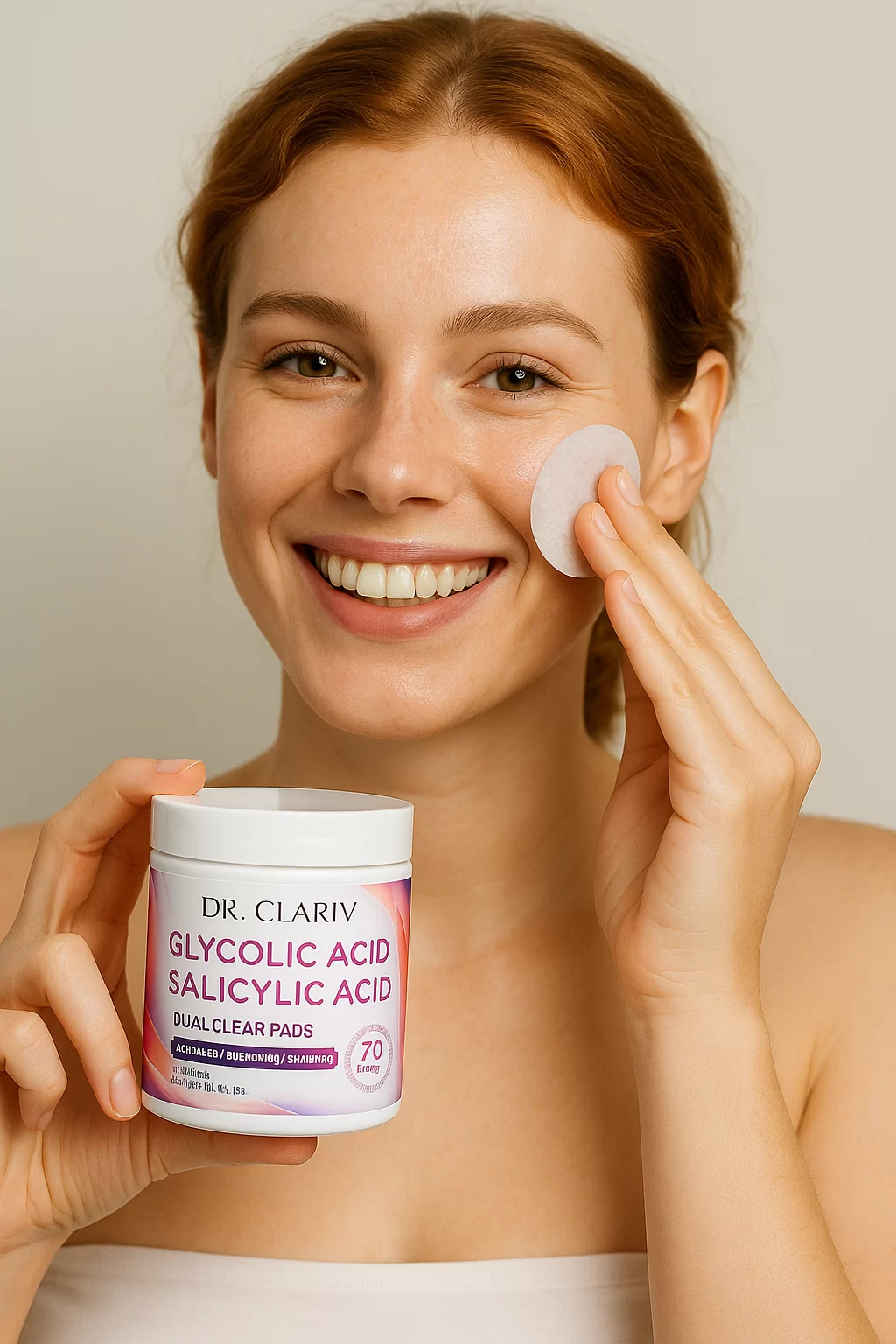 |
DualClear Pads combine the best features of resurfacing pads, resurfacing pads for face, facial resurfacing pads, complexion renewal pads, and resurfacing toner pads—all in a single, convenient product. Regular use (2–4 times per week, depending on tolerance) yields a noticeably smoother, clearer complexion with minimized pores, fewer breakouts, and reduced discoloration.
FAQs on Resurfacing Pads, Renewal Pads, and Toner Pads
Q1: How Often Should I Use Resurfacing Pads?
Begin with resurfacing pads 2–3 times per week. After 2–4 weeks, assess skin tolerance. If there’s minimal irritation, you may increase to nightly or every-other-day use—especially if the formula is gentle and includes soothing agents like niacinamide or aloe vera. Always prioritize hydration and barrier repair.
Q2: Can I Use Resurfacing Pads for Face if I Have Sensitive Skin?
Yes, but choose formulas labeled as “sensitive” or those containing lower concentrations of acids (e.g., 2%–5% glycolic or 0.5%–1% salicylic). Ingredients like panthenol, ceramides, and aloe vera in resurfacing pad for face help mitigate irritation. Start with once-per-week use and gradually increase to 2–3 times weekly if no adverse reactions occur.
Q3: What’s the Difference Between Facial Resurfacing Pads and Resurfacing Toner Pads?
Facial resurfacing pad often have a textured side for mild physical exfoliation along with acids for chemical renewal. Resurfacing toner pad rely solely on chemical exfoliants (AHAs/BHAs) delivered via a saturated pad. Toner pads provide purely chemical action and typically feature a liquid-only layer, whereas facial resurfacing pad offer physical and chemical exfoliation.
Q4: Will Resurfacing Pads Increase My Skin’s Sun Sensitivity?
Yes. Any acid-based exfoliation—whether from resurfacing pad for face, facial resurfacing pad, or resurfacing toner pad—can thin the outermost layer of skin, making it more susceptible to UV damage. Always apply a broad-spectrum SPF 30 or greater each morning, regardless of weather. Reapply if you remain outdoors for prolonged periods.
Q5: Can I Combine Resurfacing Pads with Other Exfoliating Products?
Use caution. Combining multiple acid-based treatments—like resurfacing pads, resurfacing toner pad, and harsh scrubs—on the same night can overwhelm the skin. If you need to use several formats, space them across different days (e.g., Monday: resurfacing pad; Wednesday: resurfacing toner pad; Friday: gentle scrub). Always monitor for signs of over-exfoliation: redness, tightness, or flaking. If these occur, reduce frequency.
Conclusion
In the quest for luminous, even-toned skin, resurfacing pads stand out as a versatile, effective solution. Whether you choose resurfacing pads for face, facial resurfacing pads, complexion renewal pads, or resurfacing toner pads, the key is consistent, balanced use. These pads provide controlled exfoliation, deep pore cleansing, and barrier support—delivering results far superior to abrasive scrubs or inconsistent DIY peels.
Dr.Clariv’s DualClear Pads exemplify the peak of resurfacing innovation: combining a micro-textured surface, balanced salicylic acid, niacinamide, and soothing botanicals into one hygienic, convenient package. By integrating resurfacing pads into a well-rounded skincare routine—paired with proper hydration, targeted serums, and daily SPF—you’ll unlock a clearer, smoother, and more radiant complexion. Embrace the power of resurfacing pads and watch your skin transform, revealing its healthiest glow yet.
Customer Feedback
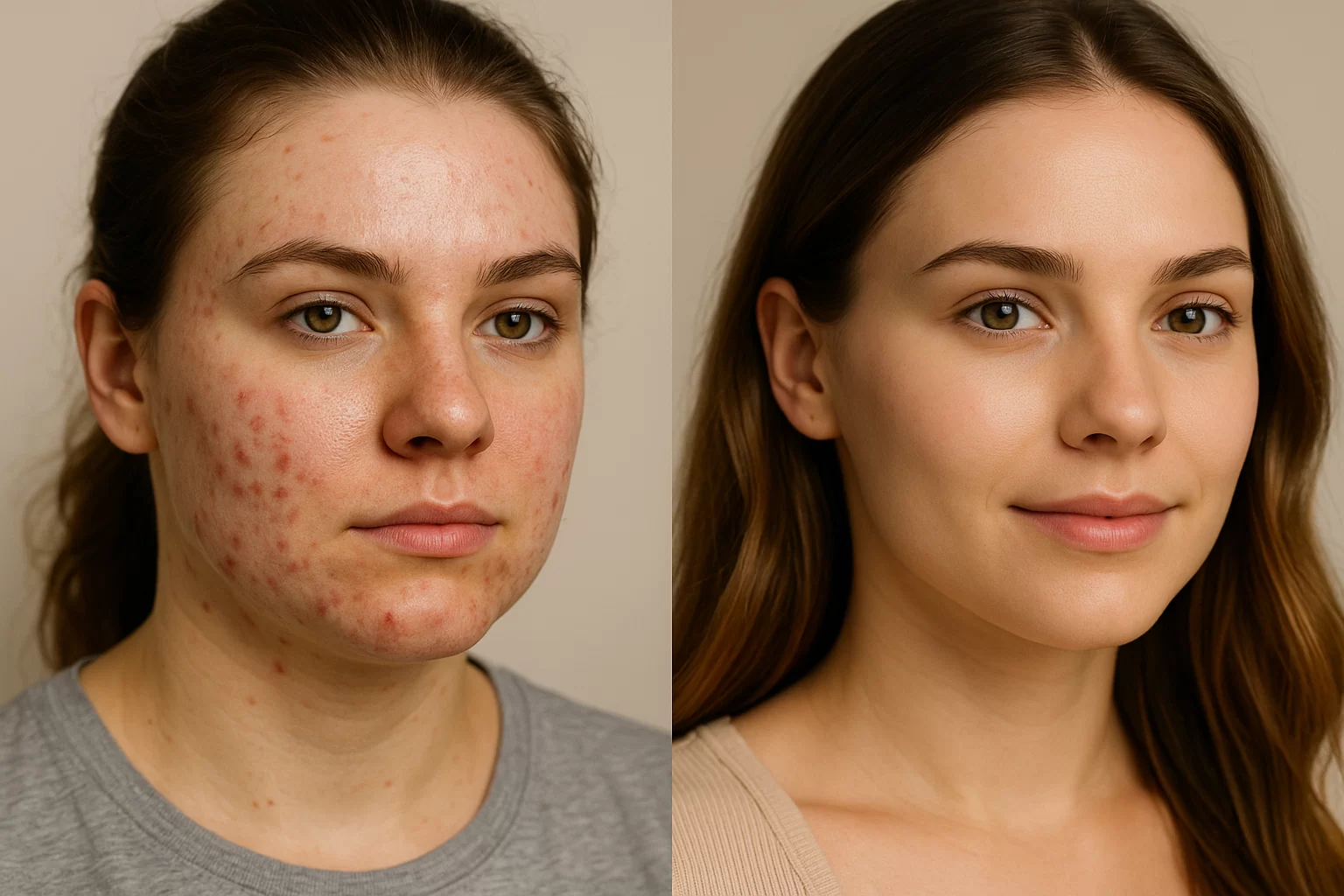 |
⭐⭐⭐⭐⭐“Using DUALCLEAR PADS has been a game changer for my skincare regimen. The pads are infused with gentle acids that help slough off dead skin, and now my foundation goes on so much smoother. Plus, my skin feels calm and balanced, not tight or overly dry.” — Samantha M., 28, Dallas |

